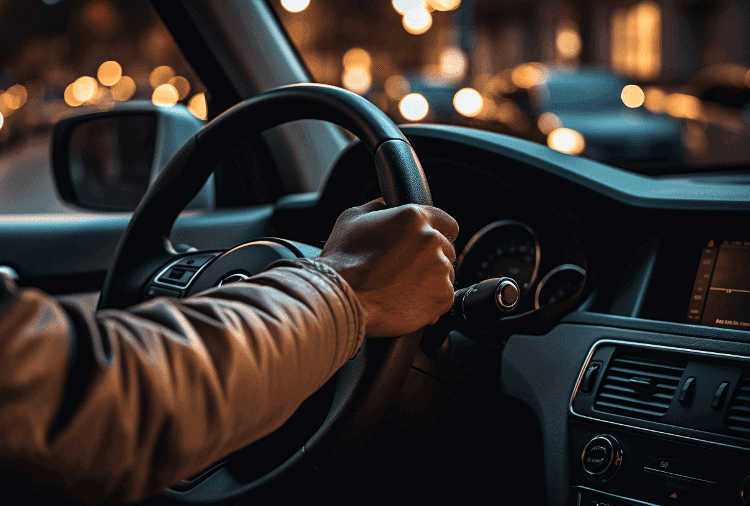In the domain of personal injury law, negligence stands out as a cornerstone concept, especially in Lakewood cases. Defining and proving negligence, however, is not a straightforward task and demands a strategic approach. This includes establishing a duty of care, demonstrating its breach, and effectively leveraging evidence such as medical documents, eyewitness accounts, and expert evaluations. How can legal representation empower plaintiffs in these situations and what role does negotiation play? As we explore these strategies, we invite you to further examine their role in shaping the outcome of personal injury cases.
Contents
Understanding Negligence in Law
Frequently, the term “negligence” is casually thrown around in everyday conversations, often without a solid understanding of what it truly implies in the context of law. In legal terms, negligence refers to a situation where an individual fails to exercise reasonable care, thereby resulting in injury or damage to another party.
To further understand negligence, it is essential to appreciate two core components: causal connection and duty breach. A causal connection refers to the link between the negligent action and the resultant harm. If such a connection cannot be established, negligence may not be proven.
On the other hand, a duty breach refers to the violation of a legal obligation to act in a certain way. In personal injury cases, this typically involves the failure to act with the level of care that a reasonably prudent person would have exercised under similar circumstances.
Elements of a Negligence Claim
In the intricate web of personal injury law, establishing a negligence claim pivots on four essential elements. First, the plaintiff must establish that the defendant owed them a duty of care. This obligation varies depending on the relationship between the parties involved.
Second, the plaintiff must demonstrate a breach of that duty. Breach examples could include a driver not adhering to traffic rules, or a medical practitioner not observing standard medical protocols.
The third element is the causal connection between the breach and the harm suffered by the plaintiff. This implies that the defendant’s actions (or inactions) directly resulted in the injury. For instance, if a driver’s disregard for traffic rules led to a collision causing injury to the plaintiff, a causal connection is established.
Lastly, the plaintiff must show that they suffered damages as a result of the defendant’s negligence. Damages can be physical, financial, or emotional, and must be quantifiable.
Gathering Evidence for Your Case
Having successfully established the elements of a negligence claim, the focus now shifts to the equally important task of gathering evidence for your case. The evidence types you collect play a fundamental role in substantiating your claim and are instrumental in case preparation.
A detailed approach to evidence gathering involves collecting both physical and documentary evidence. Physical evidence can include anything from the actual object that caused the injury to photographs of the accident scene. Documentary evidence, on the other hand, encompasses medical reports, eyewitness accounts, and any relevant communications.
Persuasive evidence often exists in the form of expert testimonies. These professionals can provide an objective analysis and verify the negligence of the defendant, which strengthens your case. In addition, digital evidence, such as surveillance footage or data logs, can be incredibly impactful if available.
However, it is essential to handle evidence meticulously. Preserving the integrity of the evidence is critical to prevent any claims of tampering. As a result, proper storage, documentation, and presentation of the evidence are fundamental steps in the process.
Ultimately, thorough and strategic evidence gathering can greatly enhance your chances of proving negligence in a personal injury case.
Documenting Injuries and Damages
A critical aspect of every personal injury case is the accurate documentation of injuries and damages. This task, while seemingly straightforward, requires meticulous attention to detail and strategic planning.
Medical records serve as a primary source of documentation in these cases. These records provide a detailed account of the patient’s injuries, treatments, and prognosis, serving as indisputable evidence of the physical harm suffered. They also include the healthcare professional’s expert opinion, which can notably support the victim’s claims.
Photographic evidence, on the other hand, offers a visual representation of the injuries, capturing their severity and extent in a manner that words often cannot. Photos of the accident scene, the victim’s immediate physical condition, and the progression of the injuries over time can be compelling proof of the incident’s impact.
In addition, documenting damages is essential. This includes recording all medical expenses, loss of income, property damage, and even non-economic damages like pain and suffering.
Role of Eyewitness Testimony
The role of eyewitness testimony in personal injury cases is multifaceted, bearing significant influence on the case outcome. The validation of such testimony can effectively substantiate claims and strengthen the plaintiff’s case. However, the credibility of the eyewitnesses themselves also comes under scrutiny, hence making it a critical aspect to evaluate in the legal proceedings.
Validating Eyewitness Testimony
In the domain of personal injury cases, the role of eyewitness testimony can often be a significant factor in determining negligence. However, the reliability of a witness and the consistency of their testimony are essential to the validation process.
Witness reliability refers to the degree to which the testimony can be trusted. The witness’s physical and psychological state at the time of the incident, their proximity to the event, and their ability to recall details accurately all contribute to their reliability. It is the responsibility of legal representatives to investigate and confirm these factors to ascertain the credibility of the evidence.
Testimony consistency, on the other hand, revolves around the stability of a witness’s account over time. Repeated questioning and cross-examination can reveal discrepancies or gaps in a witness’s memory, which could potentially undermine their testimony. As a result, maintaining consistency in their statements is essential for the validation of their testimony.
Validating eyewitness testimony is a meticulous process, but it is indispensable in personal injury cases. By affirming witness reliability and testimony consistency, legal professionals can build a strong case and increase the chances of proving negligence.
Influence on Case Outcome
Shedding light on the influence of eyewitness testimony on the outcome of personal injury cases, it becomes apparent that this component can substantially tilt the scales of justice. The gravity of such testimony in shaping the verdict of negligence cases cannot be understated.
In a courtroom, the application of negligence standards often hinges on the narrative woven by eyewitness accounts. These accounts, when accurately reported and substantiated, can provide a vivid portrayal of the incident, aiding the jury in deciphering the breaching of duty of care, causation, and damages, the three pillars of negligence claims.
Notably, legal precedents repeatedly underscore the weight of eyewitness testimony in confirming or refuting allegations of negligence. For instance, a bystander’s account of a slip-and-fall accident at a Lakewood supermarket could dramatically influence the verdict by corroborating or contradicting the plaintiff’s claim.
It is thus essential for both the plaintiff and the defendant to take into account the potential impact of such testimonies. Crafting a robust legal strategy invariably involves anticipating this impact and devising tactics to either leverage supportive narratives or counter unfavorable ones. Consequently, the role of eyewitnesses can be pivotal in shaping the outcomes of personal injury cases.
Credibility of Eyewitnesses
Undeniably, the credibility of eyewitnesses plays a significant role in the adjudication process of negligence cases. In these instances, witness reliability is a determining factor for the outcome. An eyewitness with a consistent, unwavering account can provide compelling evidence that bolsters the victim’s case, potentially leading to a favorable outcome.
However, it is essential to note that eyewitness memory is not infallible. Various factors can impact the accuracy of these testimonies, including the time elapsed since the incident, the conditions under which the event was observed, and the witness’s emotional state. As a result, the legal team must scrutinize the credibility of the eyewitness by examining their recall ability and their account’s consistency over time.
A strong strategy for proving negligence is to corroborate the eyewitness testimony with other evidence. This could include surveillance footage, medical reports, or physical evidence from the scene. Such corroborations serve to enhance the credibility of the eyewitness, thus fortifying the negligence claim. Consequently, while eyewitnesses play a significant role, their credibility should be meticulously evaluated to affirm the strength and success of the negligence case.
Using Expert Opinions
One must not underestimate the role of expert opinions in personal injury cases. These professional perspectives can be instrumental in substantiating claims of negligence, providing credible, authoritative assessments that can sway the course of a case. Expert witness qualifications are a key factor in this process, as their background, experience, and knowledge lend weight to their testimony.
A well-qualified expert witness can dissect the complex elements of a case, transforming intricate details into comprehensible evidence. They can explain the nuances of the injury, the alleged negligence, and the connection between the two, making the case more clear and understandable for the jury. Consequently, the importance of expert testimony cannot be overstated.
Expert opinions not only help to establish the presence of negligence but also quantify the extent of damage or injury. This quantification can considerably influence the calculation of compensation, leading to a more accurate representation of the victim’s loss. Expert opinions, thus, play a multifaceted role, contributing to both the establishment of negligence and the determination of fair compensation. The strategy of using expert opinions should be seriously considered in every personal injury case.
Importance of Legal Representation
While expert opinions are instrumental in establishing negligence and quantifying damages in personal injury cases, another vital component that can dramatically influence the outcome is the presence of competent legal representation. This is not merely about having someone to guide through the legal complexities but also about having an effective advocate who can skillfully communicate your case to the opposing party and if necessary, to a jury.
Having a proficient legal counsel guarantees that the victim’s rights are upheld during the entire legal process. From the inception of the case, a good lawyer can help to identify potential sources of negligence, gather supporting evidence, and build a compelling argument. In addition, legal representation is essential in negotiating with insurance companies who are often reluctant to pay the full extent of claims.
In the context of victim advocacy, having a lawyer can provide invaluable emotional support and reassurance, reducing the stress and anxiety associated with litigation. A lawyer can also help to ascertain that victims receive the compensation they deserve for their physical injuries, emotional distress, and financial losses. Consequently, if you need effective legal aid, it is advisable to find a personal injury attorney in Lakewood to ensure that your rights are fully protected and advocated for. Legal representation plays a vital role in personal injury cases, serving both as a strategic advisor and a dedicated champion for the victim’s cause.
Case Studies of Proven Negligence
Given the importance of demonstrating negligence in personal injury cases, an examination of relevant case studies offers illuminating insights. These real-life examples not only underline the significance of establishing negligence but also provide an extensive understanding of the strategies used to prove it.
One landmark case, for instance, involved a pedestrian who was struck by a motorist failing to stop at a red light. The court, in this case, ruled in favor of the pedestrian, stating clear negligence on the part of the motorist. This case set a precedent, illustrating the importance of proving the four elements of negligence: duty, breach, causation, and damages.
Furthermore, another case study involved a shopper who slipped on a wet floor in a supermarket. The court deemed the supermarket negligent for not having promptly put up a ‘wet floor’ sign, hence breaching their duty of care towards the shopper.
These case studies exemplify how negligence has been successfully proven in personal injury cases, providing a foundation for future cases. Understanding these past cases can greatly aid in formulating strategies for proving negligence, ultimately leading to successful litigation outcomes.
Frequently Asked Questions
What Is the Average Timeline for a Negligence Personal Injury Case in Lakewood?
The average timeline for a negligence personal injury case in Lakewood can vary considerably based on case complexity. However, it typically ranges from several months to a few years to reach a resolution.
How Does Insurance Come Into Play in Negligence Cases?
In negligence cases, insurance coverage considerably influences settlements. Insurers’ liability limits dictate the maximum payout, often influencing the claimant’s compensation. It’s essential to accurately evaluate insurance policies when seeking redress for personal injury negligence.
Can Comparative Negligence Affect My Claim in Lakewood?
Yes, comparative negligence can notably impact your claim in Lakewood. It involves legal implications where the claimant’s compensation may be reduced if they’re partially at fault. Understanding this principle is essential for a successful claim.
What Are the Possible Financial Impacts of Winning a Negligence Case?
Winning a negligence case can greatly impact one’s financial situation. Financial compensation can cover immediate medical costs, long-term expenses, lost wages, and emotional distress, thereby improving the claimant’s quality of life substantially.
How Can Mediation or Arbitration Be Used in Negligence Personal Injury Cases?
Mediation offers benefits such as confidentiality and control over outcomes, while arbitration expedites the process. Both can be effective alternatives to litigation in negligence personal injury cases, promoting resolution without a potentially lengthy court process.




